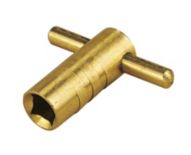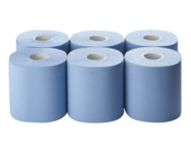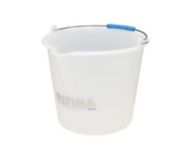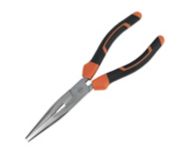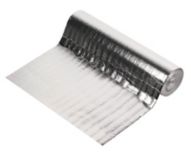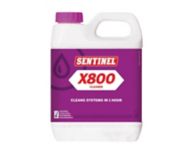How To Bleed a Radiator
How To Bleed a Radiator
Introduction
If you've been noticing that your radiators are not warming up as efficiently as they should, then it's likely that air has become trapped within the system. This can inhibit the hot water from circulating properly, leading to inconsistent heating in your home. By bleeding your radiators, you can discharge the trapped air and reinstate optimal heating performance.
The Importance of Radiator Bleeding
Maintaining the efficiency of your heating system involves many aspects, one of which is the crucial task of bleeding your radiator which should not be disregarded. In this section, we will delve into the significance of bleeding a radiator, how air gets trapped in radiators and the consequences of not bleeding a radiator.
To begin, let's comprehend why bleeding a radiator is important. Over time, air can accumulate within your heating system, causing pockets of trapped air to form in your radiators. This air obstructs hot water from fully circulating, leading to cold spots on the radiator surface and ultimately reducing the overall heat output of your system. By bleeding the radiator, you are releasing this trapped air, allowing the hot water to circulate freely, and ensuring that your radiator can heat your room effectively.
So, how does air end up trapped in radiators in the first place? As your heating system operates, it is normal for small amounts of air to enter the system. This can occur during routine maintenance, installation of new radiators, or when topping up the system with water. Additionally, over time, the water in your system can cause corrosion, which leads to the production of hydrogen gas, contributing further to the accumulation of air in radiators.
Failing to bleed your radiators can lead to various issues. As mentioned earlier, trapped air obstructs the flow of hot water, reducing the efficiency of your heating system and causing cold spots. This means that your room may take longer to heat up, and you may need to turn up the thermostat to compensate, leading to higher energy bills. Moreover, the trapped air can also cause noisy operation, such as gurgling or banging sounds, which can be quite bothersome.
To avoid these problems, it is recommended to bleed your radiators at least once a year or whenever you notice cold spots on the surface. Bleeding a radiator is a simple process that can be done using a radiator key or a screwdriver, depending on your radiator type. By doing so, you will ensure that your heating system operates efficiently, keeping your home warm and cosy throughout the year.
When to Bleed Your Radiator
One critical task in maintaining your radiator is bleeding it. Bleeding a radiator involves releasing trapped air from the system, which allows hot water to flow freely and ensures optimal performance. But how do you recognise if your radiator needs bleeding? Here are some telltale signs:
Signs that your radiator needs bleeding:
- Uneven heating: If certain parts of your radiator feel colder than others, it may indicate that air has accumulated and is preventing proper heat distribution.
- Gurgling or hissing noises: Unusual noises emanating from your radiator can indicate trapped air, which needs to be released.
- Reduced efficiency: If your radiator takes longer to heat up or doesn't get as warm as it used to, bleeding may be necessary.
How Often You Should Bleed Radiators
Now that you are familiar with the symptoms, you might wonder how often you should bleed your radiator. Well, the frequency of bleeding depends on various factors:
Frequency of radiator bleeding:
- Seasonal changes: It's advised to bleed your radiators at the start of the heating season to ensure optimal performance.
- Usage patterns: If you use your heating system extensively, you may need to bleed your radiators more frequently.
Before proceeding to bleed your radiator, it's important to assess its condition:
Assessing the condition of your radiator:
- Check for leaks or corrosion: Inspect your radiator for any signs of leaks or corrosion, as these issues should be addressed before bleeding.
- Ensure the system is turned off: Before bleeding, ensure your heating system is switched off to avoid any potential accidents.
By recognising the need to bleed your radiator and understanding the symptoms, frequency, and condition assessment, you can ensure your radiator operates efficiently and keeps your home warm and comfortable.
Equipment for Radiator Bleeding
Having the right tools can significantly simplify the process of bleeding a radiator and make it more efficient. Here are the essential tools you'll need:
- Radiator Key: The radiator key is a small, L-shaped tool specifically designed for bleeding radiators. It is used to open the air valve located at the top of the radiator, allowing trapped air to escape and hot water to flow freely. The key is usually made of metal and has a square or hexagonal opening that fits over the valve.
- Cloth or Towel: Before you start bleeding the radiator, it's important to have a cloth or towel handy. This will help catch any water that may spill out during the bleeding process, preventing any mess or damage to your flooring.
- Bucket or Container: To collect the excess water that comes out when bleeding the radiator, you'll need a bucket or container. This will ensure that the water doesn't go to waste and can be disposed of properly.
- Long Nose Pliers: In some cases, the air valve on the radiator may be difficult to turn with just your hands. In such situations, a pair of long nose pliers can come in handy. Use them to grip the valve and turn it gently to open or close it.
How to bleed a radiator without a key:
While a radiator key is the most commonly used tool for bleeding radiators, there are a few alternatives you can consider. For instance, some modern radiators come with a built-in bleed valve that can be operated using a flat head screwdriver. Additionally, there are radiator bleed kits available that include a range of tools specifically designed for bleeding radiators. With these essential tools at your disposal, you'll be well-equipped to bleed your radiators effectively and maintain optimal heating in your home.
Step-by-Step Guide: How to Bleed Your Radiator
If your radiator is not heating up properly or has cold spots, it may be time to bleed it. Bleeding a radiator involves releasing any trapped air inside the system, allowing hot water to flow freely and effectively heat your room. Here's a step-by-step guide to help you through the process:
- Before starting, ensure your central heating system is turned off and the radiator is cool to the touch.
- Locate the radiator bleed valve, typically found at the top of one end of the radiator.
- Prepare a cloth or towel to catch any water that may escape during the bleeding process.
- Using a radiator key or a flat head screwdriver, carefully insert it into the bleed valve and slowly turn it anti-clockwise
- You will hear a hissing sound as the trapped air escapes. Once the hissing stops and water starts to come out, quickly close the bleed valve by turning it clockwise.
- Wipe away any water spills and check the radiator pressure gauge if you have one. If the pressure is too low, you may need to top it up.
- Repeat the process for all radiators in your home, starting from the lowest floor and working your way up to ensure all air is removed.
Safety precautions during radiator bleeding:
- Always exercise caution when working with hot water and radiators. Use gloves or a cloth to protect your hands from burns.
- Be prepared for water spills by placing a cloth or towel beneath the bleed valve.
- If you are unsure about bleeding your radiator or encounter any issues, it is recommended to seek professional help.
Tips to ensure effective radiator bleeding:
- Regularly check and bleed your radiators to maintain optimal heating efficiency.
- Ensure your central heating system is switched off before attempting to bleed a radiator.
- If you have a pressurized system, ensure the pressure is at the correct level after bleeding.
Resolving Issues After Bleeding Your Radiator
After bleeding a radiator, it's not uncommon to encounter a few issues that may require further troubleshooting. In this section, we will discuss how to handle persistent cold spots, deal with low boiler pressure, and what to do if the radiator remains cold after bleeding.
One problem you may come across after bleeding a radiator is the presence of cold spots. This can occur when there is trapped air or debris in the system. To resolve this, ensure that all the radiators in your home are bled properly. Start from the lowest level and work your way up, bleeding each radiator. This will help to remove any remaining air or blockages and ensure even heat distribution throughout your home.
Another issue you might encounter is low boiler pressure. Bleeding a radiator can sometimes cause a pressure drop, resulting in the boiler not functioning as efficiently. To fix this, you can check the pressure gauge on your boiler and if it's low, you will need to repressurize the system. Consult your boiler's instruction manual for specific guidance on how to do this, as the process may vary depending on the make and model of your boiler.
If, after bleeding a radiator, you find that it is still cold, other underlying issues could need to be addressed. There may be a blockage in the system or a faulty valve. In such cases, it's
recommended to seek professional help from a qualified heating engineer who can diagnose and fix the problem for you.
Preserving an Efficient Heating System
After bleeding your radiator, there are a few additional maintenance tips you can follow to ensure the long-term efficiency of your heating system. By incorporating these practices into your routine, you can prevent future issues and maximise the performance of your radiators.
Firstly, it is crucial to regularly check the pressure of your boiler. Low pressure can affect the effectiveness of your radiators and reduce their ability to heat your home efficiently. If you notice that the pressure is too low, consult your boiler's manual for instructions on how to repressurise it.
Furthermore, it is essential to keep your radiators clean and free from any obstructions. Dust and debris can accumulate over time, hindering the flow of hot air and reducing the overall efficiency of your heating system. Wipe down your radiators regularly with a damp cloth to remove any build-up.
Another helpful tip is to install radiator reflector panels. These panels can be placed behind your radiators to reflect heat back into the room, rather than allowing it to escape through exterior walls. This simple addition can significantly improve the efficiency of your radiators and reduce heat loss.
While regular maintenance can help maintain the efficiency of your heating system, there may be instances where professional help is required. If you notice any persistent issues with your radiators, such as uneven heating or leaks, it is best to seek the assistance of a qualified heating engineer. They will have the expertise to diagnose and resolve any underlying problems, ensuring your radiators operate at their optimal level.
Shop products from this guide

